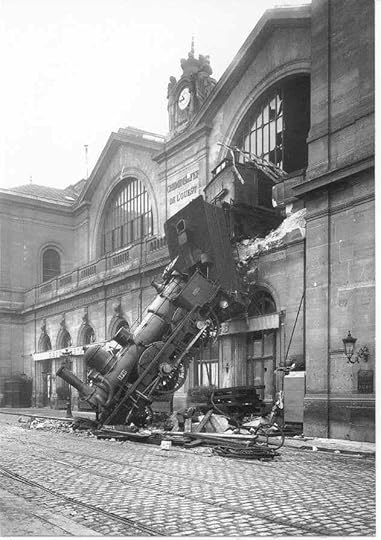What do you think?
Rate this book


456 pages, Hardcover
First published January 1, 2007




آنچه در زیر می آید به نظر این افراد زشت می آمد:
کریستوفر كرف و ویکتور ناواسکی (نظرات و انتقادات خوانندگان)
خبرگان سخن می گویند تصنیف های یوهان سباستین باخ از زیبایی، هماهنگی و وضوح در ملودی بی بهره است. (یوهان آدولف شايب،)۱۷۳۷
افراط در صداهای زننده. (لوئیس اشپور درباره اولين اجرای سمفونی شماره پنج بتهوون):
به راستی آیا شوپن موسیقی اش را به یک معلم موسیقی ارائه کرده بود، اگر چنین می کرد، امید می رفت آن معلم قطعه موسیقی اش را پاره و زیر پایش لگدمال کند - این چیزی است که آرزو داشتیم به صورت نمادین انجام میدادیم. لودویگ رلستاب، ۱۸۳۳)اپرای ریگولتو فاقد ملودی است. بعید است که این اپرا در فهرست آثار نمایشی باقی بماند. (روزنامه موسیقی پاریس، ۱۸۵۳)
من موسیقی آن برامس رذل را نواخته ام. عجب حرامزاده بی استعدادی! (چایکوفسکی در دفترچه یادداشت روزانه اش)
تاریخ ادبیات فرانسه برای یکصد سال از کتاب گلهای بدی با عنوان تحفه یاد خواهد کرد. (امیل زولا، نوشته ای درباره مرگ بودلر)
این اثر انسانی دیوانه می تواند باشد. (آمبرواز ولار در ۱۹۰۷، درباره تابلوی دوشیزگان آوینیون، اثر پیکاسو)
ممکن است از سیخ نگاه داشتن گردنم بمیرم، ولى به مغزم تا آنجا که ممکن است فشار می آورم تا بلکه بفهمم چرا سی صفحه از یک فصل باید به توصیف غلت زدن در تختخواب پیش از به خواب رفتن، اختصاص پیدا کند. (نظر یک خواننده درباره کتاب در جستجوي زمان از دست رفته اثر پروست)
شما رمان خود را در زیر خرواری از جزئیات مدفون کرده اید، جزئیاتی که به خوبی پرداخت شده اند ولی به کلی زائدند (نامه یک ناشر فرانسوی به گوستاو فلوبر در رابطه با کتاب مادام بوواری)
در ابداع و خلق شخصیت و پیرنگ داستان، ابتکار چندانی خرج نشده است [...] جایگاه بالزاک در ادبیات فرانسه، نه شاخص و نه رفیع خواهد بود. (اوژن پواتو، ۱۸۵۶)
در کتاب بلندیهای بادگیر، تمامی نقصانهای جین ایر نوشته خواهر شارلوت هزاران بار بزرگ تر شده اند، و تنها تسلی خاطر ما این است که این کتاب هرگز به گستردگی خوانده نخواهد شد. (جیمز لوريمر درباره امیلی برونته ، ۱۸۴۹)
موبی دیک، غم انگیز، ملال آور، و دلتنگ کننده ، یا مضحک است. [...] و ناخدای دیوانه داستان، آدم خسته کننده هولناکی است. (سه ماهنامه جنوبی، ۱۸۵۱)
والت ویتمن در عرصه هنر به ناشیگری یک خوک در زمینه ریاضیات است. (منتقد لندن، ۱۸۵۵)
این داستان ظاهرا به هیچ سرانجامی منتهی نمی شود - نه سیر زندگی و نه شخصیت قهرمان داستان به گونه ای طراحی و پرداخت نشده است که پایان داستان را موجه و منطقی جلوه دهد. به طور خلاصه به نظر ما این داستان هیچ نقطه اوجی ندارد. (گزارش یک خواننده درباره اسکات فیتز جرالد در اثرش با نام این سوی بهشت، ۱۹۲۰)
خدای بزرگ، من نمی توانم این را منتشر کنم. هر دوی ما به زندان خواهیم افتاد. (گزارشی بر کتاب حريم اثر ویلیام فاکنر، ۱۹۳۱)
غیرممکن است که داستانهای مربوط به حیوانات در آمریکا فروش داشته باشد. (گزارش یک خواننده درباره کتاب قلعه حيوانات اثر جرج اورول، ۱۹۴۵)
باید آن را برای یک روانکاو تعریف کرد، شاید هم این کار شده باشد، چیزی که به زحمت به رمانی حاوی نوشتاری عجیب تبدیل شده است، ولی در حقیقت به طرز مقاومت ناپذیری تهوع آور است. (گزارش یک خواننده درباره کتاب لولیتا اثر ولادیمیر ناباکوف، ۱۹۵۵)
رمان بودنبروکها چیزی نیست مگر دو مجلد ضخیم که نویسنده در آنها داستان بی ارزشی از مردمانی بی ارزش را با پرچانگی بی ارزشی تشریح می کند. (ادوارد انگل درباره توماس مان، ۱۹۰۱)
تازه خواندن کتاب یولیسس را تمام کرده ام و فکر میکنم که این اثر شکست خورده است [...] کتاب بسیار پرگوست . تلخ است. پرمدعاست. بی اصالت است، نه فقط در معنای مشخص و رایج، بلکه از نظر ادبي. (از دفترچه یادداشت روزانه ویرجینیاوولف)
این پسرک هیچ استعدادی ندارد. (ادویار مانه خطاب به کلود مونه درباره پیر اوگوست رنوار)
هیچگاه تصویر جنگ داخلی پول ساز نبوده است. (توصيه اروینگ تولبرگ، از شرکت رسانه ای مترو گلدوین مایر، در باب احتراز از خرید امتیاز فیلم بر باد رفته)
فیلم برباد رفته به بزرگترین افتضاح هالیوود تبدیل خواهد شد. من بسیار خرسندم که این کلارک گیبل است که با مغز به زمین خواهد خورد، نه گری کوپر. (گری کوپر پس از رد پیشنهاد بازی در نقش رت باتلر)
من با مردی که چنین گوشهایی دارد چه کنم؟ (جک وارنر، پس از مشاهده آزمون بازیگری کلارک گیبل، ۱۹۳۰) .
ناتوان از بازیگری . ناتوان در آواز خواندن. کچل. با توانایی اندک در رقص. (مدیر عامل شرکت رسانه ای مترو گلدوین مایر پس از آزمون بازیگری فرد آستر، ۱۹۲۸)










"Il bello ha dei canoni precisi, il brutto, invece, lascia spazio all'immaginazione, perché può ispirare sia disgusto sia pietà.
E ogni epoca ha le sue regole."